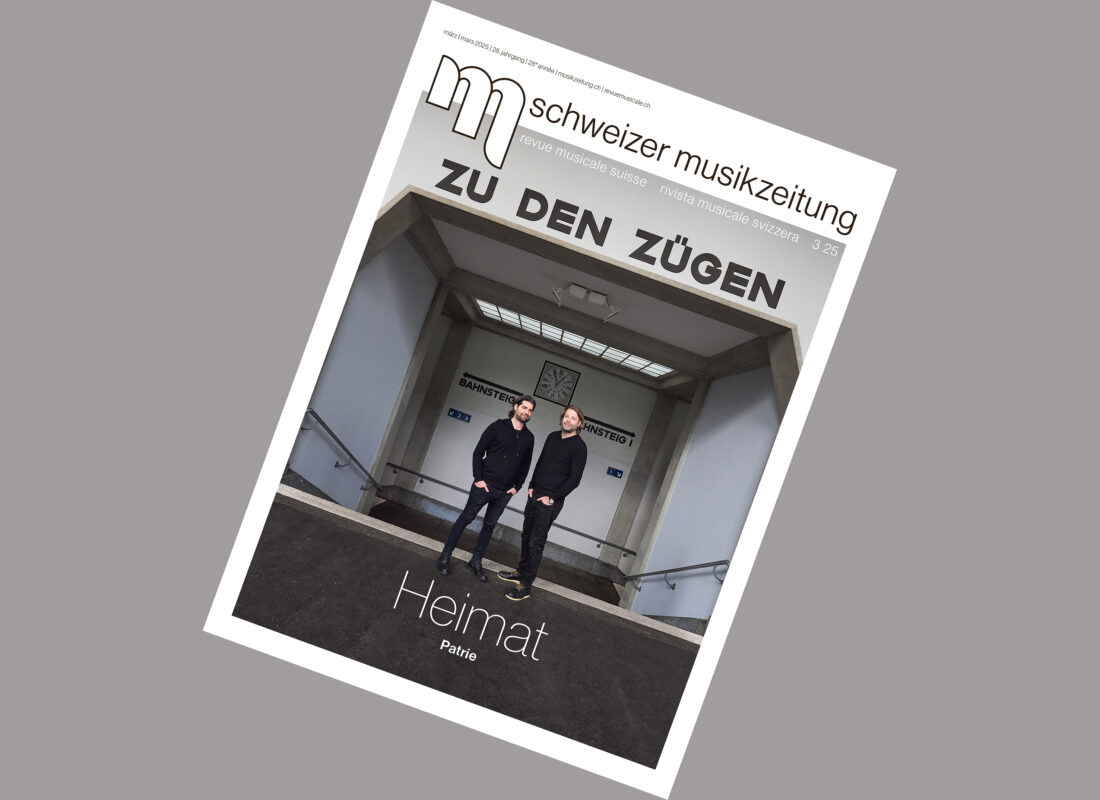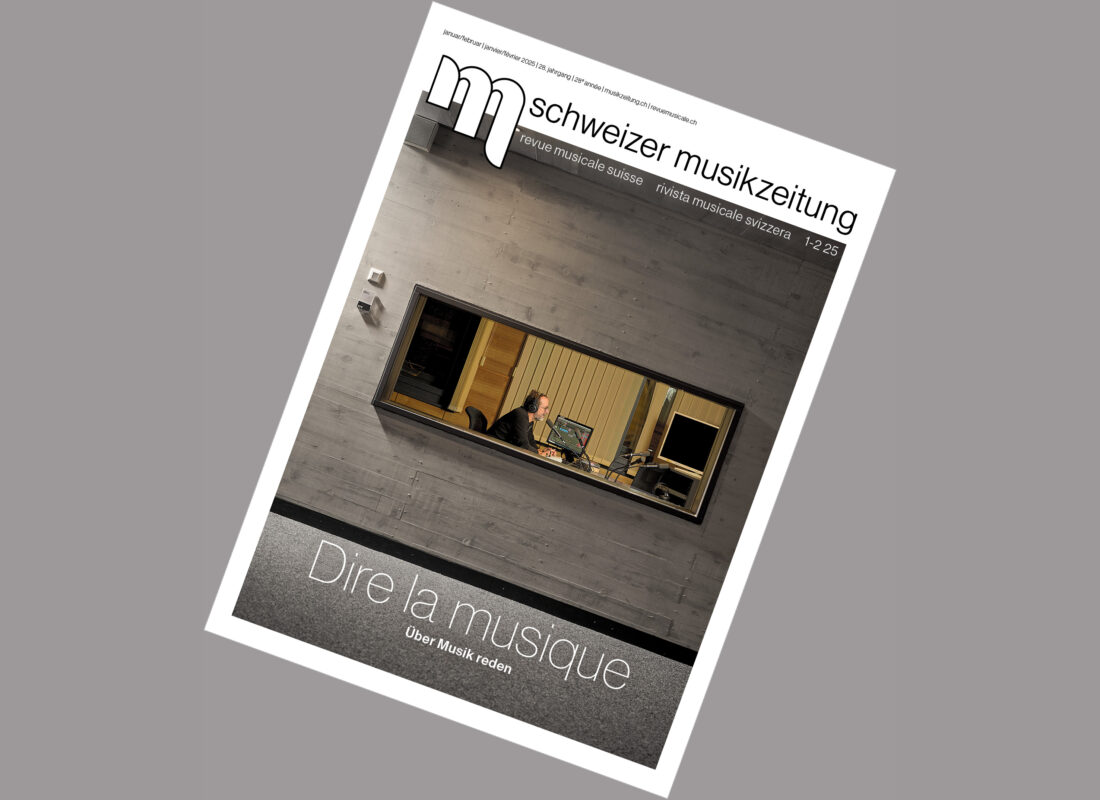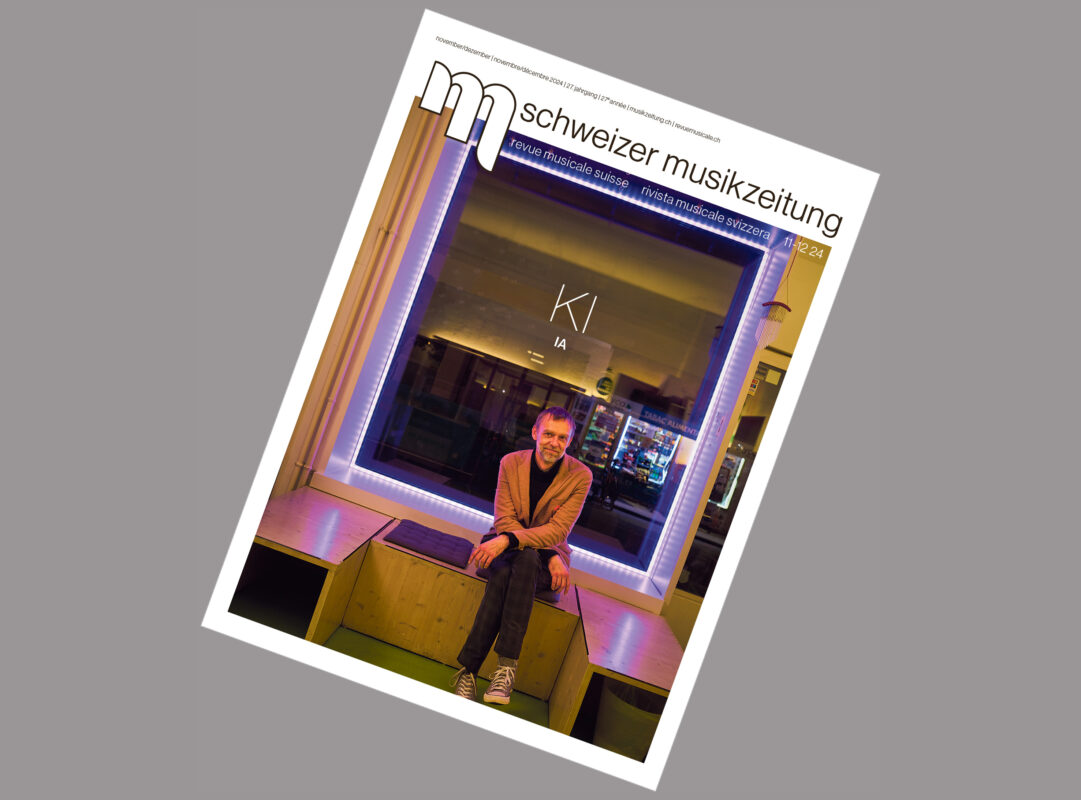Rarely played organ sonata
The rediscovered Rheinberger, who stood alongside Brahms during his lifetime (1839-1901) and was highly revered as a composition teacher, pianist, organist and conductor in Munich, will once again be honored as a thoroughbred musician who was stylistically at the height of his time and did not adhere to the restrictions of the cecilia in his church music. The fact that his sonata forms are also imaginative and innovative will be demonstrated by the 9th Organ Sonata in B flat minor op. 142.


The rediscovered Rheinberger, who stood alongside Brahms during his lifetime (1839-1901) and was highly revered as a composition teacher, pianist, organist and conductor in Munich, will once again be honored as a thoroughbred musician who was stylistically at the height of his time and did not adhere to the restrictions of the cecilia in his church music. The fact that his sonata forms are also imaginative and innovative will be demonstrated by the 9th Organ Sonata in B flat minor op. 142.
The sonata is rarely played due to its uncomfortable key, but is formally particularly interesting. But why did the composer choose the key of B flat minor? It is noticeable that each of the 20 organ sonatas is in a different key. Since the 24 Fughetten ausgen Stils for organ op. 123 (1883) and the Preludes in etude form op. 14 (1863-68) runs through all 24 keys (unordered, not as in J. S. Bach or Chopin), one can assume that Rheinberger had planned to write 24 organ sonatas in all keys, but that death took the pen out of his hand after the twentieth (1901). In view of the extremely dark, melancholy key of B flat minor and the glorious final fugue in B flat major, the idea of the sonata could be: "from darkness to light". But this is a long, winding path that we want to describe.

- Music example 1
This is not possible without going into the forms. We want to avoid the concept of analysis. While the first movements of Rheinberger's piano sonatas and chamber music works are usually in sonata form, albeit with many original variations, Rheinberger follows the example of Mendelssohn in all his organ sonatas, whose six organ sonatas op. 65, originally Voluntaries deliberately bypass the sonata form. Rheinberger shapes each sonata differently. There are preludes, toccatas, fugues, fantasies, passacaglia variations, song movements and titles such as Introduction, Canzona, Intermezzo, Capriccio, Pastorale, Idylle, Provençal, but the majority of the movements have no title. The first movement of the 11th Sonata in D minor op. 148 comes closest to sonata form: in a kind of exposition, the main movement consists of two strongly contrasting resolute themes ("Agitato" heading, the second theme m. 25 ff.), the secondary movement of a song-like theme in the parallel key of F major (m. 67). This deviates to E major and then develops ever more dramatically with modulations to a dynamic climax that cannot well be called a "final group", even if it is followed by the first main movement theme in the main key, as if the exposition were repeated. This is followed by the strongly modulating second movement theme instead of a short development section, fortissimo played. An interjection of the first theme feigns a reprise beginning (m. 122), which, still fortissimoThe second movement theme follows after just twelve bars, in B flat major, B flat major, C sharp minor and D major. It calms down temporarily in the major variant of F major. The first theme (m. 186) and a stretto (m. 217) build up towards the end.

- Music example 2
As is so often the case with Rheinberger, the Sonata in B flat minor is based on a cyclical idea: the last movement rounds off the work by referring back to the first. This can be described as typical of the time and is also frequently found in César Franck. The first movement, Prelude is introduced pathetically as a Grave. The almost unbelievably slow metronome measure of crotchet = 72 should, like Rheinberger's other metronome markings, be taken seriously. The first, almost depressive theme, Allegro moderatoThe first part, crotchet = 84, with continuous quaver movement of the two middle voices mainly in sixth parallels (note example 1) does not indicate a continuous tempo. Despite the rich harmony, it remains in the dark main key. Two longer sections of the movement are poco meno mosso to play. It is probably tempo 72, even if Rheinberger does not specify this. With the semiquaver movement (musical example 2, m. 41), the second theme in the parallel key does not appear as a Gravebut even more agitated than the first. Its key progression is also turbulent and complex, at one point even leading to E major with enharmonic confusion. The short continuation with a quiet, calm and song-like third theme (musical example 3, m. 68) remains in the parallel key and therefore cannot be described as a secondary movement. As there is no new tempo marking here, it is probably the same tempo, which appears calm by itself with predominantly crotchet motion.

- Music example 3
The same large-scale development is repeated, albeit with various modifications, with the three themes, the second, however, in the surprising E flat major, a whole tone higher. The third theme in B flat major temporarily promises a future solution, but the end of the movement falls with the modified first theme and the Grave-beginning Adagio-The end back into the darkness.
The second sentence, Romance in swaying six-eighths time, is in the earthy, rooted key of E flat major. It could be seen as a pastoral scene, interrupted in the middle section in E flat minor not by a thunderstorm, but by heavy clouds of a country rainstorm. Repeated use of the Neapolitan sixth chord, the last time achieved by artful modulation to F flat major, gives this section its contrasting depth. When I supervised Rheinberger's organ works in individual editions published by Amadeus (1990), I found the metronome marking of this movement, quaver = 112, "too low", but have since come to the conclusion that it is appropriate. In such cases, the Romanist and conductor Vittorio Raschèr said to his amateur orchestra Camerata stromentale romanica: "You will probably still be allowed to develop."

- Note example 4
Fantasy and Finale (Fuga) follow each other attacca. In the fantasia, an extended introduction that roams freely at different tempi, Rheinberger's differentiated inscriptions should be noted: Tempo moderato (quarter = 72) and Allegro moderato resp. animato (probably faster); Adagio resp. Adagio espressivo and Adagio molto (probably slower); rit. and poco rit. A battle takes place between darkness and light. The finale is a tribute to the stile anticoWe will soon see why the same number is used as in the first movement. In the fugue, which is interesting but without counter-subjects and other contrapuntal arts, the victory of light would be too easily achieved if inner doubts and temptations did not have to be overcome. They play out in the restatement of the first theme from the beginning of the sonata (m. 108), descending successively from G minor via F minor to the most extreme E flat minor. This takes place above the fugue theme in the pedal, which leads from E flat major, the key of the counter-note related to Grossterz, in two ascending fifths via B flat major to F minor (musical example 4). Rheinberger's combination of falling and rising on top of each other is truly ingenious. The second and third time the same process takes place only with the striking head of the fugue theme in falling fifths. Not content with this tour de force, at the point where the fugue theme begins in three-part chords after a long pedal point on the dominant (m. 133) and the listeners imagine they are already in Elysium, Rheinberger brings the entire first theme in the last manifestation of the first movement (m. 141-147), where the falling fifths of the fugue theme head are already laid out, i.e. prefigured. Then (m. 151) the crotchet motion increases to crotchet triplets, the pedal part climbs from step to step and the upper part repeats the subject head. Where the movement thins out to the two highest voices (m. 157), the continuation of the theme struggles in crotchets against the crotchet triplets, the pedal interjections combine the melodic fall in fifths with the harmonic E flat-A flat-D flat-B flat-C flat and prepare the organ point on the dominant with the minor subdominant (m. 165), which heralds the triumphant conclusion with the last theme entry spread out homophonically in chords.
It always remains a risky undertaking to identify extra-musical references in so-called absolute music. For skeptics, it should be added that although key characteristics are largely subjective, a polarity in the circle of fifths emerged in the 19th century, not uniformly and partly different from precursors in the 18th century. Accordingly, the brightest, heavenly key is A major, the most earthly E flat major. Think, for example, of the beginning of Wagner's Rheingoldwhere the Rhinemaidens rise from an E flat major triad lasting over five minutes. Strauss also cultivates a pronounced key signature, which also includes the minor keys. The battles for direction that took place between the New Germans gathered around Liszt with their program music and the representatives of "absolute music", to be sought less among composers than among music theorists such as Eduard Hanslick, were a phenomenon of the time that obscured rather than illuminated an unbiased view of music.
Picture credits
The image detail comes from: Elson, Louis Charles: European Reminiscences, musical and otherwise, 1891, page 125.
Originally held and digitized by the British Library: British Library HMNTS 10108.f.2.








